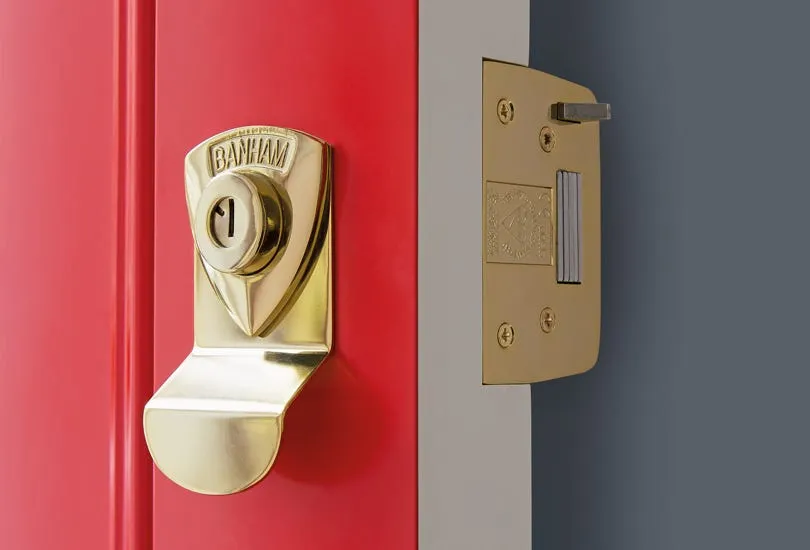Most folks don’t spend their evening poring over British lock standards. And unless you moonlight as a locksmith (or even a burglar), the phrase “BS3621” probably sounds more like a printer error than a crucial piece of home security.
Here’s the deal! Understanding BS3621 can mean the difference between a home that’s secure and one that’s technically “inviting” (to burglars and other baddies). So, we partnered with one of the UK’s most credible locksmith Bradford to write this guide and help you cut through the jargon. It should help you spot a solid lock from a flimsy fake and avoid a nasty surprise from your insurance company.
What Is a British Standard Lock?
Think of British Standards as the “Great British Bake Off” of product testing, except it focuses more on checking how long a lock can withstand a burglar with a crowbar (or other trade tools). These British Standards Institution (BSI)-created standards are a trusted benchmark for safety and lock performance.
A British Standard-compliant lock is one has survived (and passed with flying colours) the organisation’s gruelling tests. It includes attempting forced entries and subjecting the lock to repeated use. Locks might also undergo destructive drilling to the baseplate to see if it cracks.
If the lock passes, you’ll know it immediately. It has that distinct, unmistakable BSI Kitemark.
Unsurprisingly, locksmiths in the UK consider these standards non-negotiable. They ensure that no lock goes into your door without passing the test.
So, What’s BS3621 and Why Should You Care?
BS3621 locks are champions of British lock standards. These locks use a key to open a door from either side (like mortise deadlocks, cylinder night latches, and sash locks).
Locks with the BS3621 stamp (or engraving)…
- Have at least 5 levers, if it’s a mortise lock,
- Can resist drilling and picking,
- Won’t give in or buckle to the pressure of a 5-minute sustained brute-force attack, and
- Has an extended bolt throw (at least 20 mm).
Unsurprisingly, locksmiths recommend these locks because they’re the kind that give burglars the most headache while giving you a reason to sleep sounder at night.
Should Every Door Have a BS3621 Lock?
BS3621 locks work best on wooden doors, offering homeowners robust security at an affordable price. More importantly, these locks are tailor-made for traditional UK homes.
There’s one thing worth pointing out. BS3621 doesn’t work on all doors. For example, BS3621 locks can be a fire risk in properties with shared entrances, like apartments or flats (you still have to unlock the exit door with a key to escape).
In such cases, locksmiths recommend a BS8621 version. It’s like BS3621 locks, except there’s a keyless thumb-turn on the inside. This feature allows occupants in shared spaces to quickly escape the building in emergencies (like fires or human-made disasters).
How Can You Tell if Your Lock is BS3621?
Checking your lock if it’s BS3621 is easier than decoding your Wi-Fi password. You simply open your door and look at the lock case’s edge. Look for a little heart-shaped image (the BSI Kitemark). You should see “BS3621” too. If you see these marks, congratulations! You have a lock that meets the mark.
If your lock doesn’t have this mark, there’s a good chance it might not be up to standard. You might be invalidating your insurance without even realising it.
Your trustworthy neighbourhood locksmith can perform a more professional BS3621 determination. They’ll inspect it (including other locks) and replace your lock with a BS3621 version.
What Do Home Insurers Think of BS3621?
They love it! Insurance companies thrive when they don’t have to pay burglary-related insurance claims.
UK home insurance companies demand that external doors be fitted with BS3621 locks because they know these devices make it much harder for intruders (burglars) to waltz in and out.
So, if your insurer thinks you have BS3621 locks and it turns out you don’t, they might decline your claim after a break in. No homeowner wants that kind of shock.
Ask your locksmith to double-check your locks now so you’re not blindsided later.
What Other Lock Standards Are Worth Knowing?
While the BS3621 guarantees robust home security, it doesn’t cover all possible scenarios (like exiting a burning property with a shared exit). Here are other lock standards worth knowing.
BS8621 – Locks with a Quick-Exit Twist
Like we explained above, BS8621 locks are perfect for shared spaces (like communal buildings and flats) because they only use a key to open (and close) the lock from the outside. Inside, occupants can twist a thumb-turn or handle to get out.
Locksmiths recommend these locks for fire safety compliance and convenience.
BS10621 – Locks for Lockdowns
Consider this lock standard as a more secure version of BS8621. You can disable the inside handle (or thumb-turn) by inserting a key in the keyhole outside the door. It’s ideal when you’re the last to leave and don’t want anyone sneaking out the back.
Locksmiths often recommend these locks to those who want to double-down on their internal security.
TS007 – Star-Rated Cylinder Locks
These locks are a locksmith’s favourite. They don’t snap and are impervious to picking. Drilling and bumping them won’t work either. These are perfect on composite and uPVC doors.
Final Word: Don’t Leave Your Lock Security to Chance
Understanding BS3621 is all about ensuring your home is secure. It also guarantees a valid home insurance. While other lock standards exist, BS3621 is perfect for most UK homes (except those with uPVC and composite doors, where a TS007 standard would be more ideal).
Don’t play the guessing game if you’re unsure about what lock is currently on your door. Give your trusty neighbourhood locksmith a ring and have a quick inspection. More importantly, upgrade your locks to BS3621 versions (which locksmiths can perform quickly and effectively).


